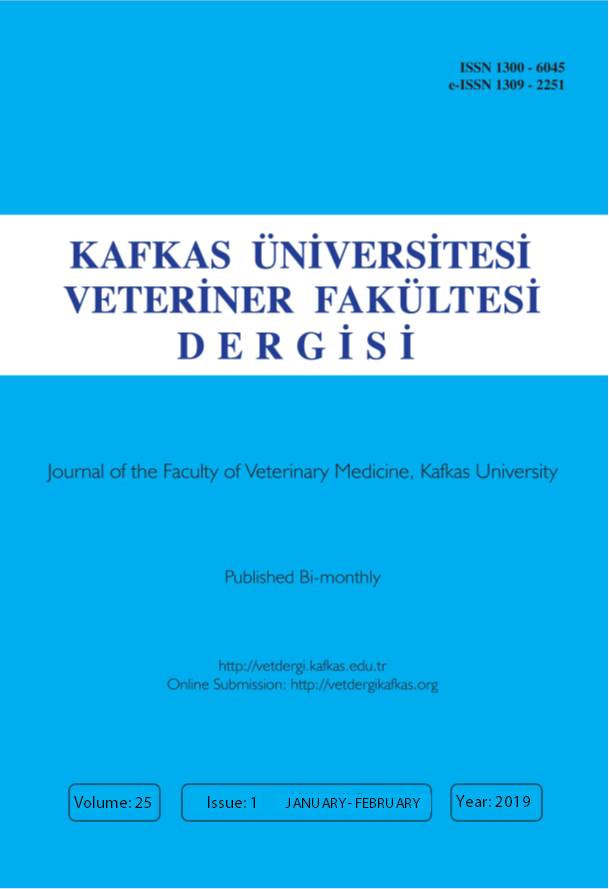
This journal is licensed under a Creative Commons Attribution-NonCommercial 4.0 International License
Kafkas Üniversitesi Veteriner Fakültesi Dergisi
2019 , Vol 25 , Issue 1
Using Mineral Elements to Authenticate the Geographical Origin of Yak Meat
1State Key Laboratory of Grassland and Agro-ecosystems, College of Pastoral Agriculture Science and Technology, College of Life Science, Lanzhou University, Lanzhou 730020, CHINA2State Key Laboratory of Plateau Ecology and Agriculture, Key Laboratory of Plateau Grazing Animal Nutrition and Feed Science of Qinghai Province, The Academy of Animal and Veterinary Sciences, Qinghai University, Xining 810016, CHINA
3INRA, UMR1213 Herbivores, F-63122 Saint-Genès-Champanelle, FRANCE
4Clermont-Université, VetAgro Sup, UMR1213 Herbivores, BP 10448, F-63000 Clermont-Ferrand, FRANCE
5Faculty of Agriculture and Life Sciences, PO Box 85084, Lincoln University, Lincoln 7647, Christchurch, NEW ZEALAND DOI : 10.9775/kvfd.2018.20366 Labeling systems for niche market food products is becoming increasingly important to address consumers" expectations. Yak meat is "green" product from natural extensive rangeland on Qinghai-Tibetan plateau. A trace technique is essential for consumers to know the origin of yak meat. In the current study, mineral fingerprints were investigated for their potential to classify yak meat according to geographical origin. The concentration of more than 50 mineral contents in 24 yak meat samples from three regions on Qinghai-Tibetan plateau were analyzed by ICP-MS. Multivariate statistical analyses were used to identify the most relevant indicators of origin. Seven elements (Na, As, Ni, Se, Rb, Cd and Ti) were selected for further routine analyses based on the significant origin differences (P<0.05). The three minerals (Se, Rb, Ti) were selected by statistics analysis and established discriminant model for yak meat traceability. Linear discriminate analysis gave an overall correct classification rate of 91.7% and cross-validation rate of 87.5%. These results demonstrate the usefulness of multi-element fingerprints as indicators for authenticating the geographical origin of yak meat. Keywords : Yak meat, Mineral elements, Geographical origin, Authentication










